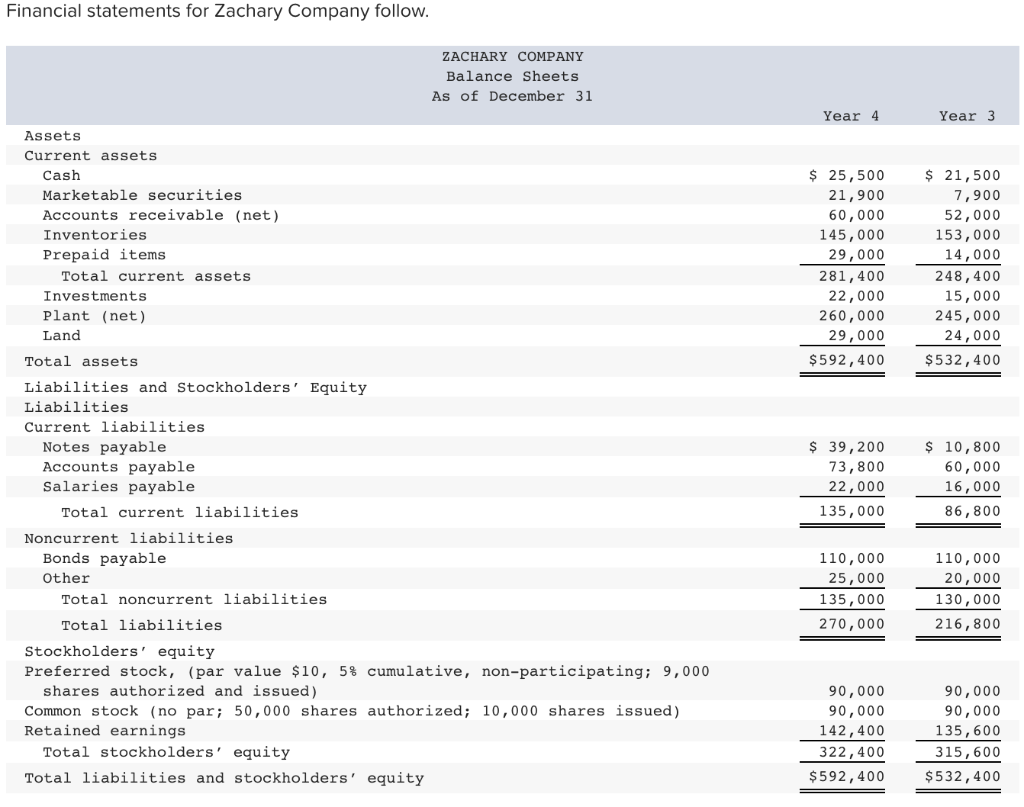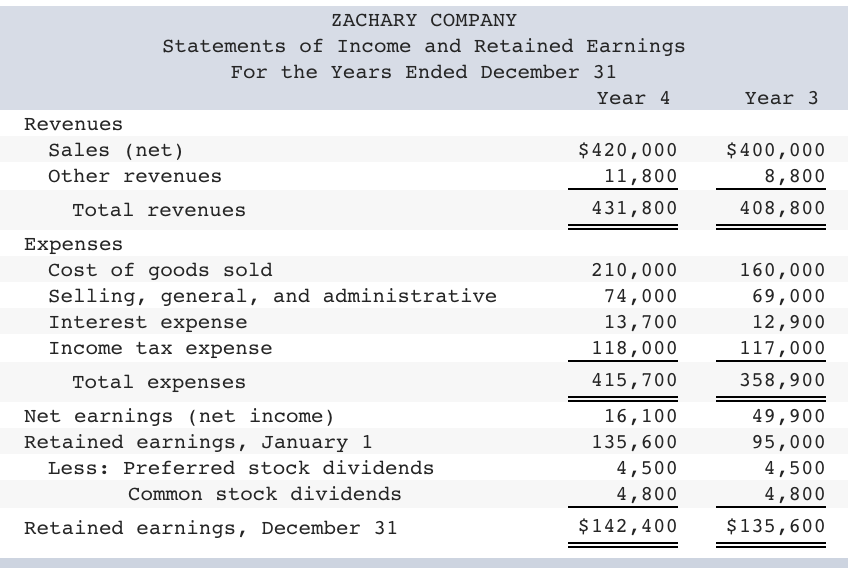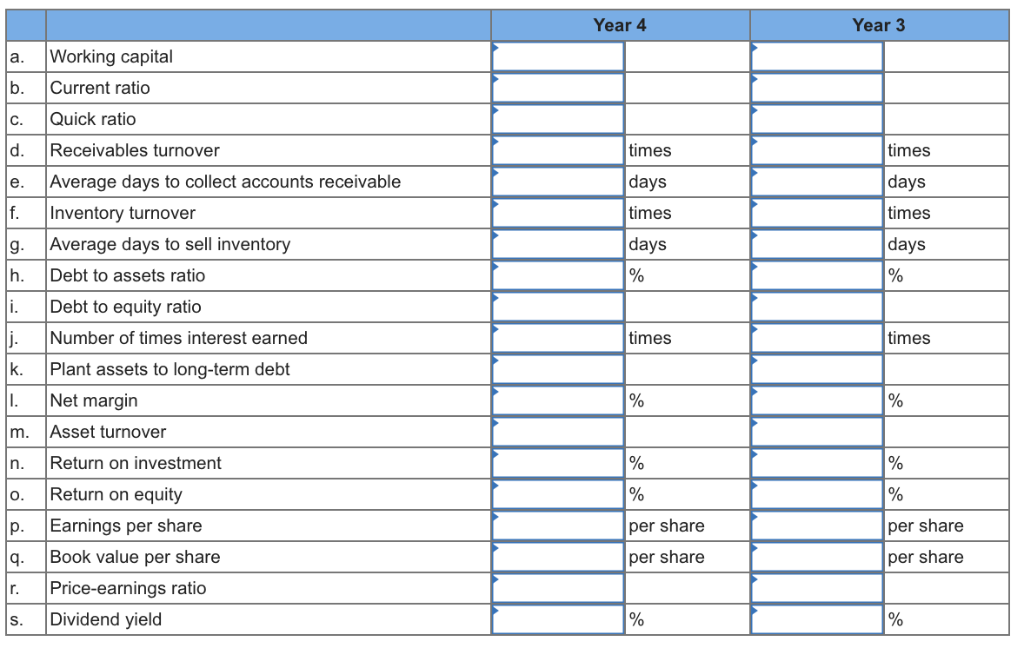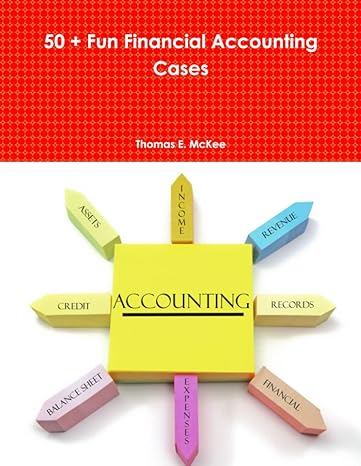



Financial statements for Zachary Company follow. ZACHARY COMPANY Balance Sheets As of December 31 Year 4 Year 3 Assets Current assets Cash 25,500 $21,500 Marketable securities 21,900 7,900 Accounts receivable (net) Inventories 60,000 52,000 145,000 29,000 153,000 14,000 Prepaid items Total current assets 281,400 22,000 248,400 15,000 Investments Plant (net) 260,000 245,000 Land 29,000 24,000 $592,400 $532,400 Total assets Liabilities and Stockholders' Equity Liabilities Current liabilities $ 39,200 $ 10,800 Notes payable Accounts payable Salaries payable 73,800 60,000 22,000 16,000 135,000 Total current liabilities 86,800 Noncurrent liabilities Bonds payable 110,000 110,000 Other 25,000 20,000 130,000 Total noncurrent liabilities 135,000 270,000 216,800 Total liabilities Stockholders' equity Preferred stock, (par value $10, 5% cumulative, non-participating; 9,000 shares authorized and issued) 90,000 90,000 Common stock (no par; 50,000 shares authorized; 10,000 shares issued) Retained earnings Total stockholders' equity 90,000 90,000 142,400 135,600 322,400 315, 600 Total liabilities and stockholders' equity $532,400 $592,400 ZACHARY COMPANY Statements of Income and Retained Earnings For the Years Ended December 31 Year 4 Year 3 Revenues Sales (net) $420,000 $400,000 Other revenues 11,800 8,800 431,800 408,800 Total revenues Expenses Cost of goods sold 210,000 160,000 Selling, general, and administrative 74,000 69,000 Interest expense 13,700 12,900 Income tax expense 118,000 117,000 415,700 358,900 Total expenses Net earnings (net income) Retained earnings, January 1 16,100 49,900 135,600 95,000 Less: Preferred stock dividends 4,500 4,500 Common stock dividends 4,800 4,800 $142,400 $135,600 Retained earnings, December 31 Required Calculate the following ratios for Year 4 and Year 3. Since Year 2 numbers are not presented do not use averages when calculating the ratios for Year 3. Instead, use the number presented on the Year 3 balance sheet a. Working capital b. Current ratio. (Round your answers to 2 decimal places.) c. Quick ratio. (Round your answers to 2 decimal places.) d. Receivables turnover (beginning receivables at January 1, Year 3, were $53,000). (Round your answers to 2 decimal places.) e. Average days to collect accounts receivable. (Round your intermediate calculations to 2 decimal places and your final answers to the nearest whole number.) f. Inventory turnover (beginning inventory at January 1, Year 3, was $159,000). (Round your answers to 2 decimal places.) g. Number of days to sell inventory. (Round your intermediate calculations to 2 decimal places and your final answers to the nearest whole number.) h. Debt-to-assets ratio. (Round your answers to the nearest whole percent.) i. Debt-to-equity ratio. (Round your answers to 2 decimal places.) j. Number of times interest was earned. (Round your answers to 2 decimal places.) k. Plant assets to long-term debt. (Round your answers to 2 decimal places.) I. Net margin. (Round your answers to 2 decimal places.) m. Turnover of assets. (Round your answers to 2 decimal places.) n. Return on investment. (Round your answers to 2 decimal places.) o. Return on equity. (Round your answers to 2 decimal places.) p. Earnings per share. (Round your answers to 2 decimal places.) q. Book value per share of common stock. (Round your answers to 2 decimal places.) r. Price-earnings ratio (market price per share: Year 3, $12.70; Year 4, $14.40). (Round your intermediate calculations and final answer to 2 decimal places.) s. Dividend yield on common stock. (Round your answers to 2 decimal places.) Year 4 Year 3 Working capital a. b. Current ratio Quick ratio times d. Receivables turnover times days days Average days to collect accounts receivable e. times times f. Inventory turnover days days Average days to sell inventory % h. Debt to assets ratio % i. Debt to equity ratio Number of times interest earned times j. times k. Plant assets to long-term debt I. % Net margin m. Asset turnover Return on investm % n. % % Return on equity O Earnings per share per share per share Book value per share q. per share per share Price-earnings ratio r. Dividend yield % %










